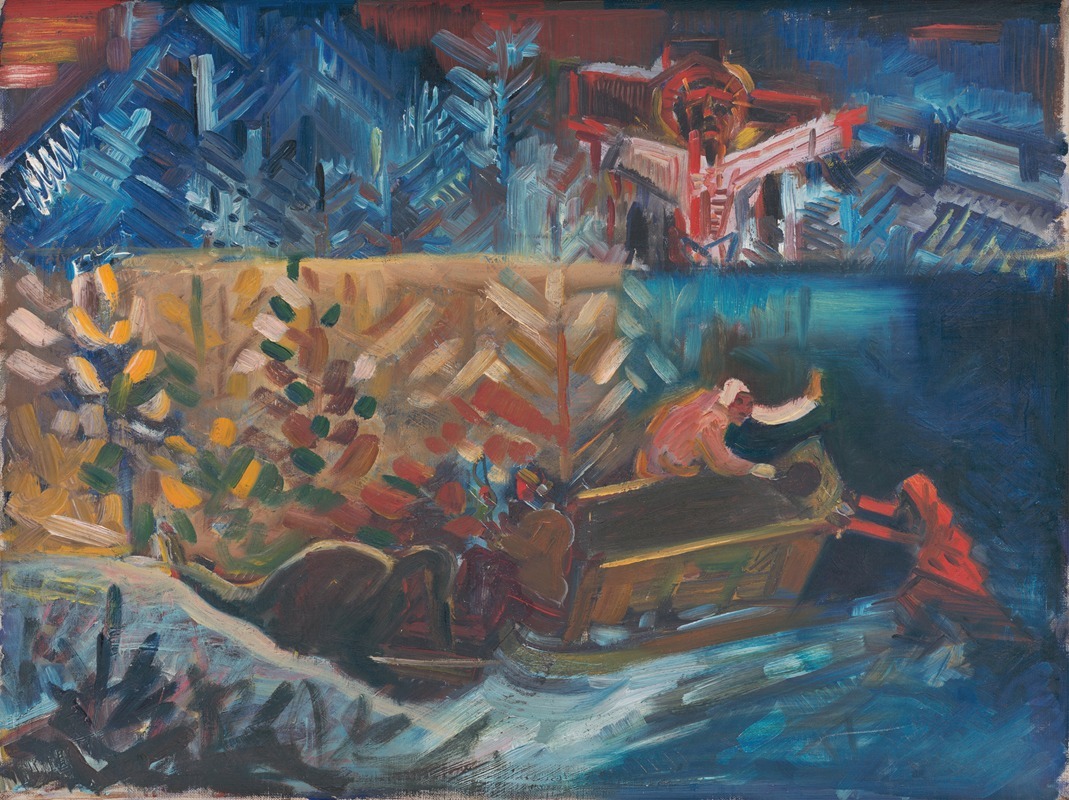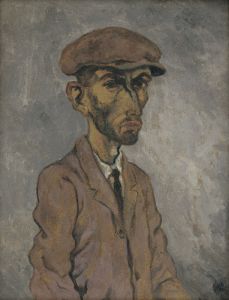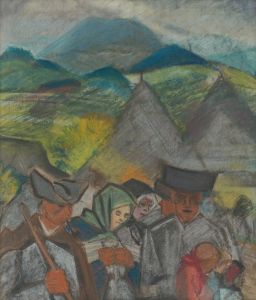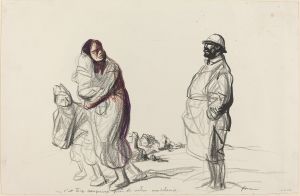
Carrying the Sick
A hand-painted replica of Arnold Peter Weisz-Kubínčan’s masterpiece Carrying the Sick, meticulously crafted by professional artists to capture the true essence of the original. Each piece is created with museum-quality canvas and rare mineral pigments, carefully painted by experienced artists with delicate brushstrokes and rich, layered colors to perfectly recreate the texture of the original artwork. Unlike machine-printed reproductions, this hand-painted version brings the painting to life, infused with the artist’s emotions and skill in every stroke. Whether for personal collection or home decoration, it instantly elevates the artistic atmosphere of any space.
Arnold Peter Weisz-Kubínčan was a Slovak-Jewish painter whose work is associated with the interwar period and reflects the cultural and social tensions of the time. One of his notable works, Carrying the Sick, is a painting that exemplifies his unique artistic style and thematic focus. The painting is believed to have been created during the 1930s, a period marked by significant political and social upheaval in Europe. Weisz-Kubínčan’s art often explored themes of human suffering, resilience, and the fragility of life, which are evident in this piece.
Carrying the Sick portrays a group of individuals engaged in the act of transporting an ill or injured person. The composition emphasizes the collective effort and solidarity of the figures, reflecting the human capacity for compassion in the face of adversity. The muted color palette and expressive brushstrokes convey a somber and introspective mood, drawing the viewer's attention to the emotional weight of the scene. The painting is also notable for its symbolic undertones, as it can be interpreted as a commentary on the broader struggles of humanity during a time of crisis.
Weisz-Kubínčan’s artistic career was tragically cut short due to the events of World War II and the Holocaust. As a Jewish artist living in Slovakia, he faced persecution under the Nazi regime. In 1944, he was deported to a concentration camp, where he is believed to have perished. Much of his work was lost or destroyed during this period, making the surviving pieces, including Carrying the Sick, particularly significant as a testament to his talent and vision.
Due to the limited documentation of Weisz-Kubínčan’s life and work, specific details about the creation and provenance of Carrying the Sick remain scarce. However, the painting is recognized as an important example of his contribution to modern art and his ability to capture the human condition through his distinctive style. Today, his surviving works are appreciated for their historical and artistic value, offering insight into the experiences and perspectives of a Jewish artist during one of the darkest periods in European history.

















